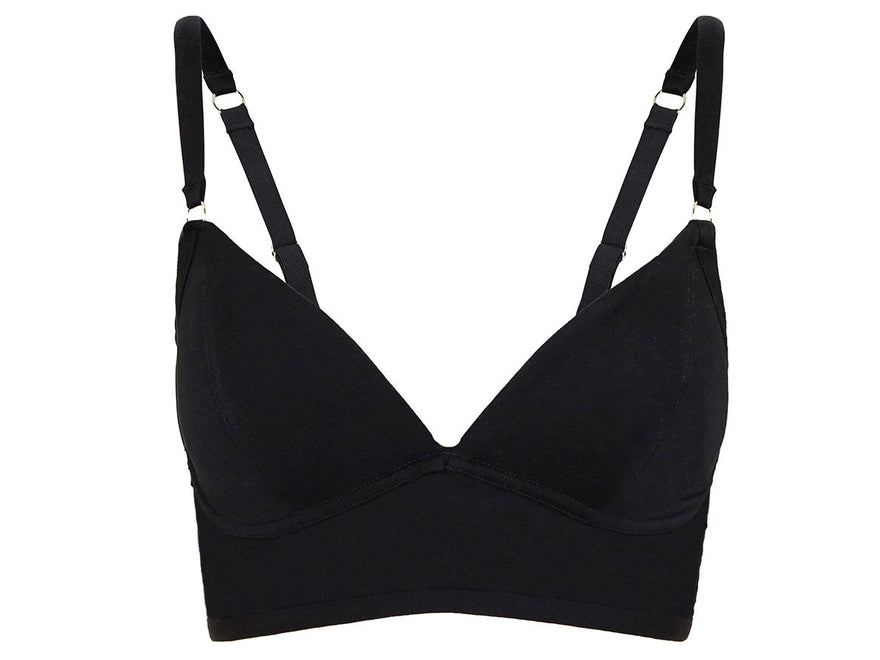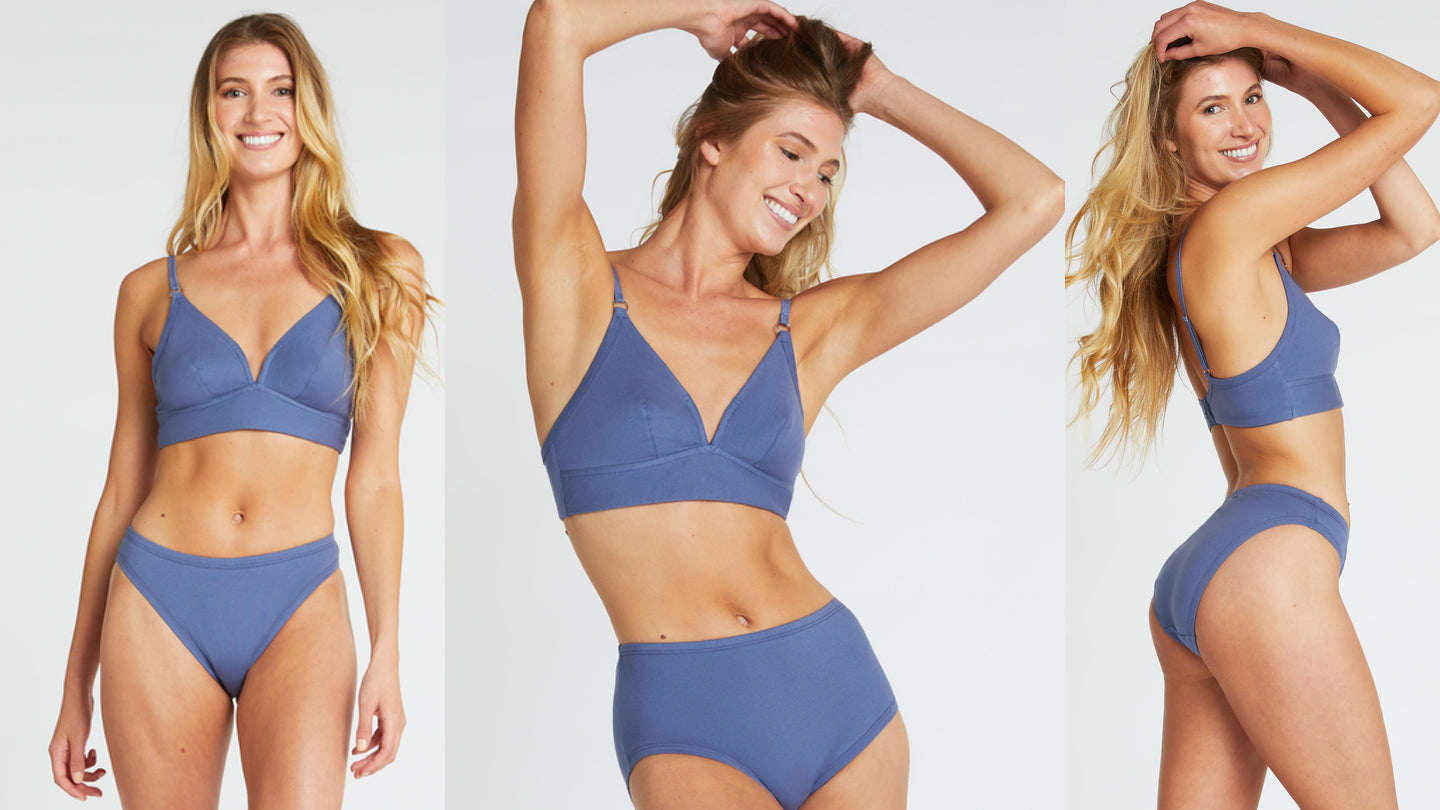It's been a long and bumpy ride The Very Good Bra! With the horror of the logistics involved in manufacturing and sending over 1000 units to over 30 countries using more 'portals' than I would wish on anyone, I can sit back and reflect a little on the journey, and laugh at things that broke my heart and kept me awake all night not so long ago.
The idea was originally conceived of as I travelled back from Christmas in Europe late 2016. Trump had just been elected, women were marching in protest and talking of burning their bras. Helen Reddy was in my view, making a very welcome return to the airwaves with I Am Woman. At the same time, the poor people of Delhi, struggling to keep warm were dying en masse as they burnt rubbish to keep warm, and inhaled the highly toxic fumes. I'd learned enough about fast fashion from many recent visits to the oh-so-enlightened good folk of the Netherlands, to realise that textiles were a large part of the problem. The idea formed fast and furious of designing a bra that could be burned or buried at end of life, and that would release no toxicity. If it could be done, I was the one who was going to do it! I'd become fascinated by the Circular Economy which I'd only learned about that year, and had already started trialling new materials with my factory, but zero-waste was an extreme challenge.
Little did I realise that it probably hadn't yet been done because it was just SO HARD TO DO!!! To say that I've had to re-invent the wheel is oversimplifying things dramatically in my view, given a wheel is just one thing and a bra is at least 9 different things sewn together. Its pretty much cost me 9 lives!
To the untrained eye it may seem quite simple, two cups, two straps and a band, however, we've become so attuned to the easy way of doing things - two foam cups and two wires - that many people don't realise what a complex art the cut-and-sew non-wired bra is across 26 sizes.
The components to a bra are as follows:
Fabric - easy right? but some needs to be rigid, some stretch, so how to do this without including spandex which is made from petroleum? We chose tencel for the body, in two different weights, because Tencel is one of the only fabrics that is truly traceable and verifiably 99% closed loop when made by Lenzing.
Elastic - extremely challenging. Everything about elastic that makes it soft against your skin is synthetic, from eh original nylon fabric to the processing. I scoured the world to find the only factory that could provide me with elastic made from natural tree rubber grown in FSC forests, knitted into organic cotton, and guess what? It costs more than 15 times more than regular elastic, and it's so rough we actually enclose it in tencel around the body to make the bra softer against your skin!
Hooks and Eyes - My this was a problem. Our factory is in China and they makes some of the most beautiful couture lingerie around, but China's lingerie industry is probably only about 20 years old, and in their age, Hooks and Eyes have always been laminated and glued to make them strong and soft and durable. Many times I got them to try prototypes, and they would come back with 'just a little glue' which was just a little too much for my liking. I was stumped. The Kickstarter was starting in 2 weeks and I'd taken a year trying to work out this problem and had no solution. Then I figured out that as this was the way that bras were made before laminate and glue, I had to go back to the source of lingerie - Europe! They'd been making bras for centuries and who ever saw a laminate Hook and Eye in Madmen? After BEGGING a great old french factory, they agreed to make me a 'tiny' quantity of about 3 times the amount I needed, if I provided the organic cotton from the Netherlands for them to make them out of. We sent the fabric, they sewed it up - it worked! They agreed to take on the job, but there was one last hurdle. Just when I thought I was safe and in production, I woke up in a lather in the middle of the night - what were they sewing them with?? Sure enough, when I emailed found out it was polyester sewing thread! More begging, then being told it was too late production had started, with the factory finally relenting when I said we would have to make them all again then. They finally agreed to stop and I sourced some Tencel thread from Switzerland that worked!
Sewing thread - as above, everything has to be squeaky clean so I sourced the world's most expensive sewing thread (which costs about 15% of the overall cost of the bra!) to sew with. Not only did the cost make my and my factory's eyes water, it also created a problem in bulk production, as it required different (slower) machines to make it hold properly - causing us another 2 week delay in production.
Labels - I tried many things for this. I was in love with a Cradle2Cradle approved pad printing process, which worked so well in the samples, right up to the point that I learned I needed to buy the entire machine for nearly USD$4000, find somewhere in China to house it, and someone to operate it. Thwarted again, and back to the Netherlands where I found a company that uses soy based inks to print on organic cotton. Prices astronomical of course, and particularly excruciating for the 26 individual bra size labels which could only be purchased in minimums of 100 each. To the 3 ladies who bought 30D bras, I sure hope you like them and will be back for more...
Foam padding - well, what can I say? We tried everything! My dear factory owner spent months sewing swatches of organic cotton and wool wadding into organic cotton to replace all that horrible polyester foam. It became the problem we had to solve. It's fair to say we didn't solve it. All options were too heavy, retained too much liquid, or were too lumpy. After a year of trials, we had to ditch that idea. If you are an A cup, we are very sorry, but we can't give you more right now. We will keep looking.
Poly-bags - of course, everything that leaves the factory must do so in its own poly bag, with a bar code on it. Even though this won't end up with the end-consumer, I cannot sleep at night knowing that I have used over 1000 poly bags for some undies and bras to get from mainland China to HK where they would be dressed in recyclable tissue and sent in a compostable mailer. Extensive research found me a company in Israel that makes poly bags from sugar cane - awesome - just one catch - minimum quantity 10,000! AAAGGHH! Amazingly, they had a bigger order going through that week which I could piggy-back off to get myself a measly 2000 for myself. Problem solved. Of course they decompose after 6 months so I will be unlikely to use the other thousand or so. As it was my factory was pretty unimpressed with the sticky strips...
The packaging was easy, it was a delight to discover NoIssue for recyclable, branded tissue and labels, and The Better Packaging Co for those amazing ComPost bags. You gotta love New Zealand, they are almost as ahead of the game as the Dutch. I've seen more photos of TVGB packaging on Instagram than I have bras!
Are you still awake? If so, you'll be relieved to know that that's it. There's bits Ive saved you from - channelling, cup re-inforcement etc - safe to say there are a few other eco wonders in there, but the above gives you the general idea of why this bra is really something special.
In all of this, we had to launch before we were ready, and before we had final pricing, because the press had found us and were loving us. When we got the final pricing mid-campaign I almost shut the Kickstarter and left the country, we were wildly out! I've spent the last month trying to take costs out of the bra - removing pin-tucks which use lots of fabric and more important, eye-wateringly expensive sewing thread - so that we can run again and keep the price accessible (albeit higher than in the campaign) whilst also make it feasible to wholesale so that we can reach more people who want this lingerie option. Its expensive, and that's not for all, but if those of us who can afford to buy such a product do so, over time we bring the pricing down. Like Teslas. Please bear with us as we try and bring zero-waste bras and undies to the masses











